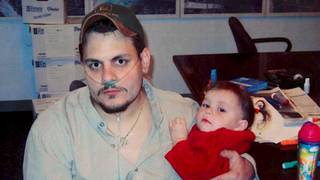
Topics
A memo from a top New York City Health Department official written less than a month after 9/11 has revealed sharp disagreements between health officials and other Giuliani administration aides over how to handle environmental contamination after 9/11. Democracy Now!’s co-host Juan Gonzalez discusses the story. [includes rush transcript]
- Juan Gonzalez, Democracy Now! co-host and * columnist* for the New York Daily News.
Transcript
AMY GOODMAN: Juan, the piece in the New York Daily News yesterday was one that you wrote. Can you talk about what you found about the conditions at ground zero?
JUAN GONZALEZ: Well, I think two very important bits of new information that have not become public so far. One is, I came across an internal memo from a top official in the Health Department who was in charge of environmental hazards and who was coordinating the city’s response to 9/11 on health issues, and also the deputy — the commissioner of the Department of Environmental Protection, who was actually doing all the testing for asbestos throughout the city; both of them were very concerned about the air quality in Lower Manhattan and, in fact, were overruled by City Hall, by Mayor — the Giuliani administration, their boss, who wanted to open up more areas around ground zero, because he was under pressure, according to the assistant commissioner, from the business community and building owners to allow more opening of areas around ground zero. So it’s clear there was a very sharp debate going on within the Giuliani administration that has never surfaced before with some top health officials saying, “Hey, we’ve got to be careful. There are real problems with the air quality here.” That’s never come forward.
But even more importantly, some of the data of the city’s testing, which again has never gotten much attention and in fact the city withheld and is still withholding from public release some of those main tests, showed that in the five days after 9/11, before hundreds of thousands of people were given the all-clear to come back to work, that the city took 38 air tests in Lower Manhattan for asbestos and of those 38 tests, 27 of them, more than 70% of the tests that the city took, showed unsafe levels of asbestos in the air. And yet the city not only took months to post those results, but then when they did on their website, have still not posted the worst results that they got in the first few days. So there’s real questions about actual withholding and burying of damaging air safety reports. And yet the public was told everything is okay, it’s okay to go back to work in that area.
AMY GOODMAN: And, of course, this being a key financial area. We’re in it, as well. We’re in the evacuation zone at the firehouse in Chinatown.
JUAN GONZALEZ: The Financial District, obviously, and all the courthouses and City Hall and all of the government offices, the Federal Building, they’re all down there in that area that was re-opened just on September 17, six days after 9/11.
AMY GOODMAN: Your paper, the New York Daily News, is almost conducting a campaign, basically, on the editorial pages about the number of sick responders. You wrote about this right after September 11, and you were investigating this, the police, fire and emergency —
JUAN GONZALEZ: Right. And now many more people obviously are coming up sick, and several have died already, their illnesses linked to exposures from 9/11. But even the paper so far is concentrating only on the thousands of rescue workers. The issue of hundreds of thousands of office workers and residents who were allowed to come back into contaminated buildings, in essence, has still not been resolved. And in fact, just this week the entire New York City congressional delegation, including Senators Clinton and Schumer, put out a special appeal to the EPA that three years after an Inspector General’s report accused the EPA of major failures and ordered it or directed it, recommended to it that it needed to clean up those office buildings, because it still hasn’t been done. No program has been instituted to clean up all of the contamination in buildings throughout Lower Manhattan.
AMY GOODMAN: Christine Todd Whitman was the EPA administrator at the time.
JUAN GONZALEZ: Yes. And she, of course, is long gone now. She left just before that report actually came out, the IG’s report, in August of 2003. It’s been three years since that report came out.













Media Options